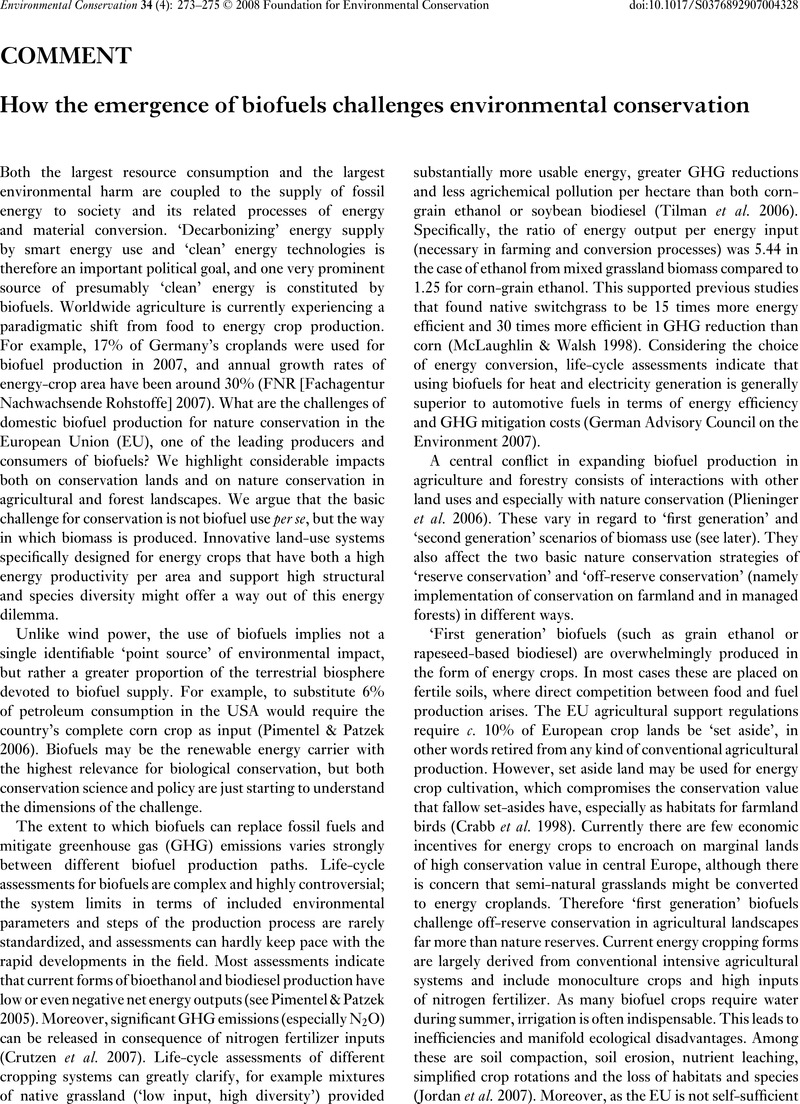Crossref Citations
This article has been cited by the following publications. This list is generated based on data provided by Crossref.
Zedler, P. H.
Anchor, T.
Knuteson, D.
Gratton, C.
and
Barzen, J.
2009.
Using an ecolabel to promote on-farm conservation: the Wisconsin Healthy Grown experience.
International Journal of Agricultural Sustainability,
Vol. 7,
Issue. 1,
p.
61.
Maclin, EdwardM
and
Bello, Juan LuisDammert
2010.
Setting the stage for biofuels:Policy texts, community of practice, and institutional ambiguity at the Fourth World Conservation Congress.
Conservation and Society,
Vol. 8,
Issue. 4,
p.
312.
Plieninger, Tobias
2011.
Capitalizing on the Carbon Sequestration Potential of Agroforestry in Germany's Agricultural Landscapes: Realigning the Climate Change Mitigation and Landscape Conservation Agendas.
Landscape Research,
Vol. 36,
Issue. 4,
p.
435.
Plieninger, Tobias
and
Gaertner, Mirijam
2011.
Harnessing degraded lands for biodiversity conservation.
Journal for Nature Conservation,
Vol. 19,
Issue. 1,
p.
18.
Plieninger, Tobias
and
Bieling, Claudia
2012.
Resilience and the Cultural Landscape.
p.
3.
Plieninger, Tobias
Schleyer, Christian
Schaich, Harald
Ohnesorge, Bettina
Gerdes, Holger
Hernández‐Morcillo, Mónica
and
Bieling, Claudia
2012.
Mainstreaming ecosystem services through reformed European agricultural policies.
Conservation Letters,
Vol. 5,
Issue. 4,
p.
281.
Reicosky, D.C.
Sauer, T.J.
and
Hatfield, J.L.
2015.
Soil Management: Building a Stable Base for Agriculture.
p.
13.



